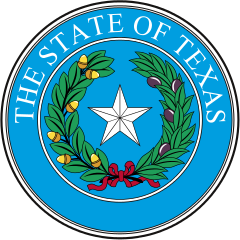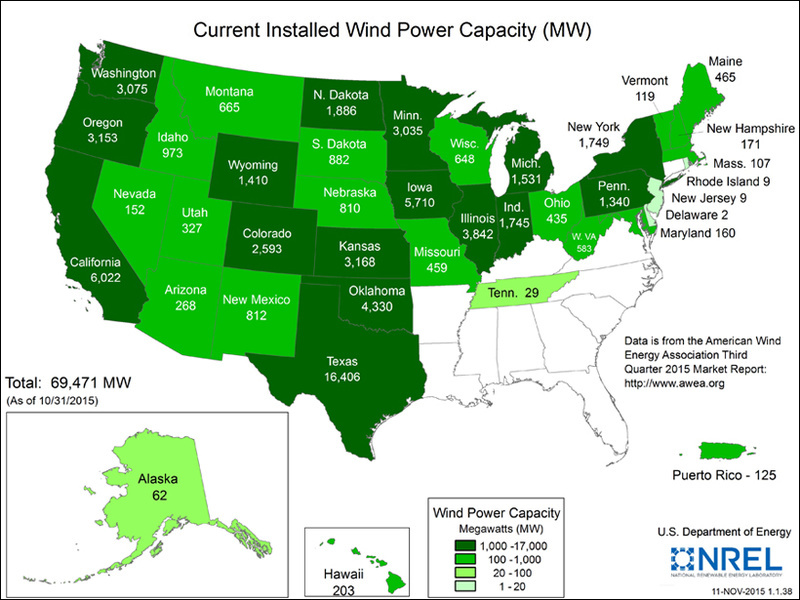News Release from windfair.net
Wind Industry Profile of
Texas: Oil State to Wind State
While the state's mostly Republican politicians including presidential candidate Ted Cruz still attract attention from time to time with reactionary remarks, this point of view no longer corresponds to the mindset of most of the Texas population. Because Texas is far greener and cleaner than expected.
The great advance in the field of renewable energies is a result of competition in the market, the liberalization of the electricity market and a big push from the government in Washington. At the moment, Texas is replacing its current coal plants much faster with more environmentally friendly gas power plants than the rest of the United States – and also much earlier than provided for in the current legislation on CO2 emissions.
Texas is also the leading US state in the field of wind energy. In 2015 the share of wind energy in the Texas power grid has increased by 26 percent. At the end of 2015 AWEA reported an installed capacity of 16,406 MW.
Map of the US Departement of Energy
Experts predict solar energy – which is yet strongly underrepresented in Texas – to grow by six times the previous installation amounts for the upcoming year. Furthermore, some people think that by 2030 there will be more solar power than electricity from wind and gas together.
Texas has since been noticed especially as a very good wind site. Many open flat plains ensure an optimal yield, so that more and more of the large US companies are investing in Texas. Among others, Facebook is currently building a huge data center in Fort Worth, which is run entirely with wind energy. Procter & Gamble and Mars draw their entire power supply from Texas wind power.
But even below the level of international multi-corporations a lot is happening in the state. As the US Environmental Protection Agency recently announced, the city of Dallas is the largest consumer of renewable electricity among all US municipalities. So far this title was held by Houston, likewise located in Texas, which now slipped to place two. In 3rd place follows the District of Columbia with the American capital of Washington. The places 4 and 5 are being held by Montgomery, Maryland and Austin, Texas. Striking: Three places of the Top 5 are held by cities in Texas. And the next potential candidate is already waiting ashore: Georgetown, located north of Austin, will soon get their entire power supply from renewables.
The reasons for this boom can be seen firstly in the increasing profitability of renewable energy. Prices for wind and solar energy fell so much in recent years that they can compete with fossil fuels. The price of solar energy, for example, has fallen more than 80 percent since 2009. So Austin Energy ran an advertisement last summer with a cost of 4 cents per kilowatt hour (kWh) to sell “the cheapest solar electricity ever”.
Georgetown Mayor Dale Ross therefore recently explained the move towards clean energy in Time magazine as follows: “No, environmental zealots have not taken over our city council, and we’re not trying to make a statement about fracking or climate change. Our move to wind and solar is chiefly a business decision based on cost and price stability.”
 A look beyond their own borders also helps to make more and more – especially young – people interested in climate change and clean energy. The role model is mainly Europe, where people have already started to discover their environmental awareness a few years back. And even the big corporations have to bow to the will of the consumer. “It’s about reputation, and it’s important to customers and employees,” John Hall, state director of clean energy for the Environmental Defense Fund in Austin, told the 'Dallas Morning News'. “They want to know you’re doing your part to reduce your carbon footprint.”
A look beyond their own borders also helps to make more and more – especially young – people interested in climate change and clean energy. The role model is mainly Europe, where people have already started to discover their environmental awareness a few years back. And even the big corporations have to bow to the will of the consumer. “It’s about reputation, and it’s important to customers and employees,” John Hall, state director of clean energy for the Environmental Defense Fund in Austin, told the 'Dallas Morning News'. “They want to know you’re doing your part to reduce your carbon footprint.”
And the future for Texas also looks green: AWEA expects again high expansion rates in wind energy in the coming year, because wind energy has become the cheapest and quickest alternative for fossil fuel power plants.
- Author:
- Katrin Radtke
- Email:
- kr@windmesse.de


